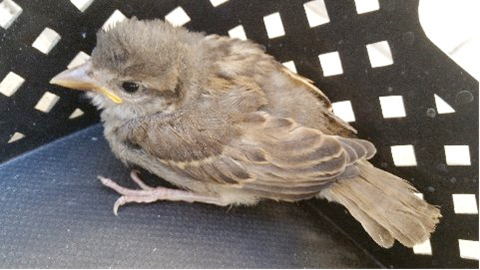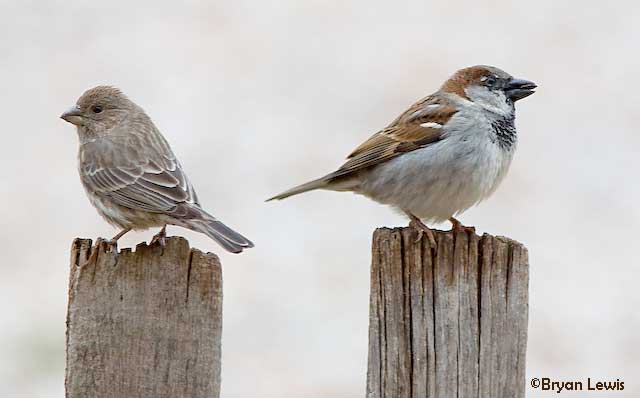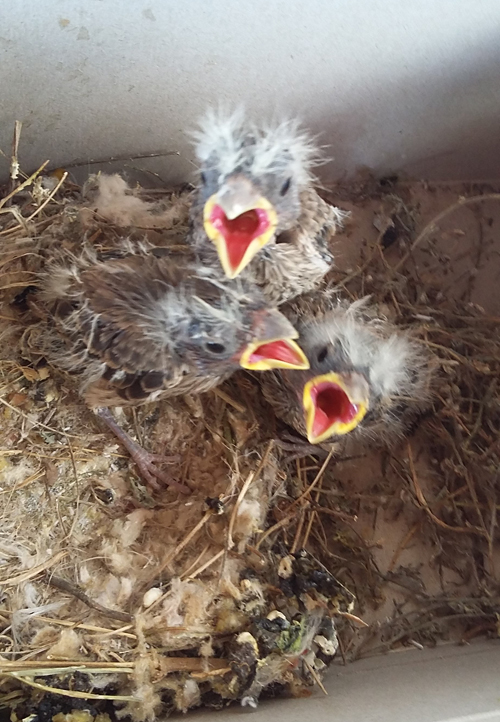Sparrows and Finches
SPARROW/FINCH RESCUE OVERVIEW
| ||||||||||||||||||||||||||||||||||||
We get lots of calls about fledgling sparrows and finches. When many of the little songbirds fledge (leave) the nest, they can't fly well for the first day. Hopefully they will find a thick bush to hide in and then they chirp for their parents to come feed them. By the following day, they should be able to flutter up into a tree. When fledgling songbirds leave the nest, they have a fear of humans and it can be difficult to feed them as they clamp their beak shut and only want to be fed by mom and dad. Prying their beak open is stressful for both bird and rehabber which is why we don't want to rescue a bird that really doesn't need to be rescued.
|
|
The fledgling should try to get away from you if you approach and he should be able to flutter fly a little. Of course if there are cats, dogs, kids, or other predators nearby, that's another consideration. The fledgling will still have a little yellow in the corners of the beak but the yellow should not extend out toward the tip of the beak. Finch fledglings will also have a tiny bit of fuzz on their head; sparrow kids have no fuzz. |
|
SPARROW/FINCH IDENTIFICATION
 House Finch An easy ID marker for the adult male House Finch is the red or orange color that is on the head/face. |
|
Two of the most common birds in the Phoenix area are the House Sparrow and the House Finch. Both are similar in size and coloring. The House Sparrow, though, is an introduced species and not protected under federal law. Some rehabilitators only handle protected species, like the House Finch, so it is important to ID the bird you have rescued. |
|
 The House Sparrow is one of the very few birds we have here that is born naked without any fuzzy down... |
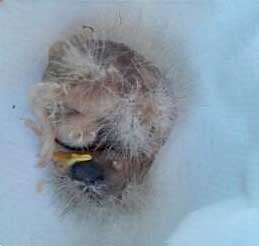 ...while the House Finch is covered in a down that looks like dandelion fuzz |
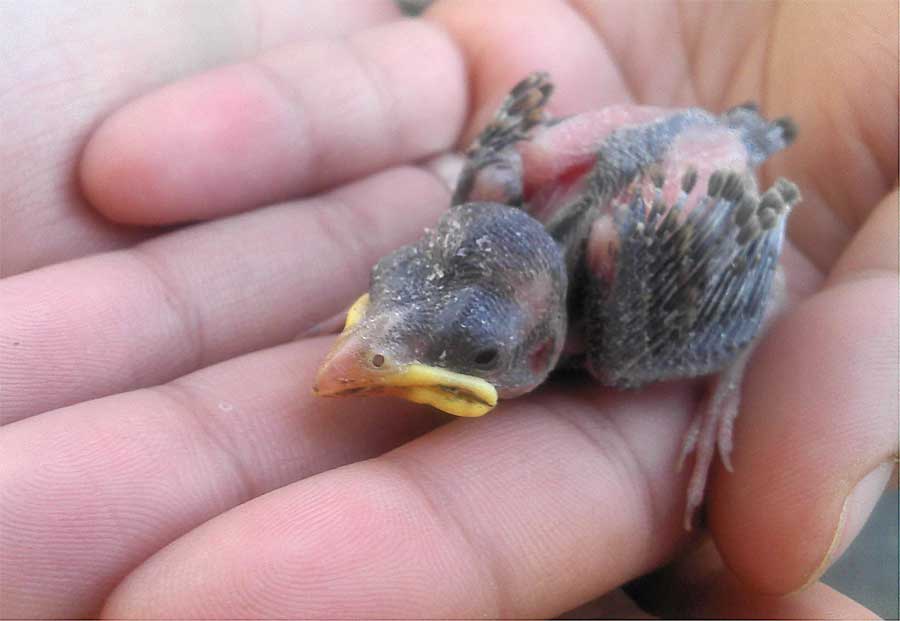 Sparrow Nestling with Pin Feathers |
Even as a juvenile, the House Finch still has some fuzzy down on the top of it's head. The underbelly has a very striped appearance to it |
 Juvenile House Sparrow |
 Juvenile House Finch |
 Fuzzy down on it's head and an underbelly with a very striped appearance are characteristics of a juvenile finch. |
NESTING
| House Sparrows often nest in roof tiles while House Finches are known to nest in hanging planters and door wreaths. | |
A conglomeration of sparrow nest; bits and pieces of dried glasses and
assorted items (gum wrappers, feathers, string, yarn, etc) >>>>>>>>
|
|
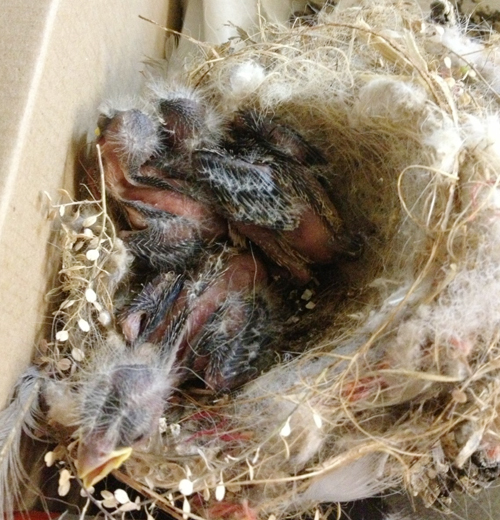 |
<<<< the more constructed nest of finches. Finches like to make nests in door wreaths and hanging patio planters |
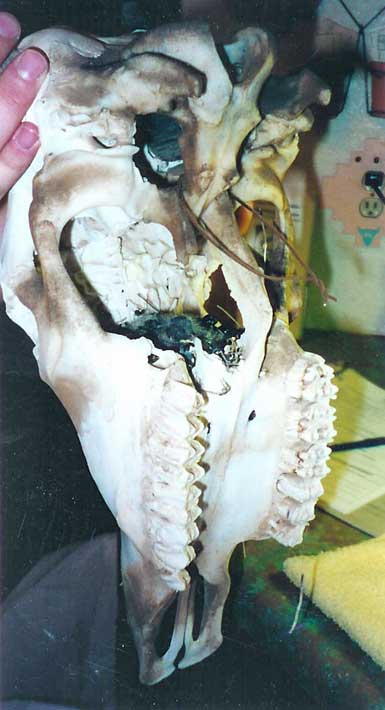 |
One eclectic House Finch couple made their nest in the skeleton of a steer's head that someone had hanging on their patio wall. |
Fledgling House sparrows might leave the nest a day early before they are fully flighted. They hide in bushes and chirp to call their parents to feed them. They should be able to fly up into a tree within 24 hours. The bird should try to get away from anyone trying to pick it up. House sparrow nestlings that fall out of the nest may be difficult to renest especially if the nest is wedged under roof tiles. Baby birds open their mouth for food and flutter their wings. Temporary foods include chopped up hard boiled egg, dry cat or dog kibble soaked in water until spongy, or strained chicken (human) baby food. People often think a baby is abandoned if the parents have stopped sitting on the nest especially at night. The parents stop brooding the babies when the babies reach an age where they can regulate their own body temperature. Baby birds have a pouch on the side of the neck called a crop where food is stored for a short time after feeding. It will look like a big bubble. Check the crop to see if it has food (probably insects) in it. |
|
For more bird photos, see our song bird gallery or baby bird gallery
Have you found a House Sparrow or House Finch?
 Contact East Valley Wildlife at 480-814-9339 ...
EastValleywildlife@gmail.com
<< or >>
Liberty Wildlife at
at 480-998-5550
Contact East Valley Wildlife at 480-814-9339 ...
EastValleywildlife@gmail.com
<< or >>
Liberty Wildlife at
at 480-998-5550
![]()


